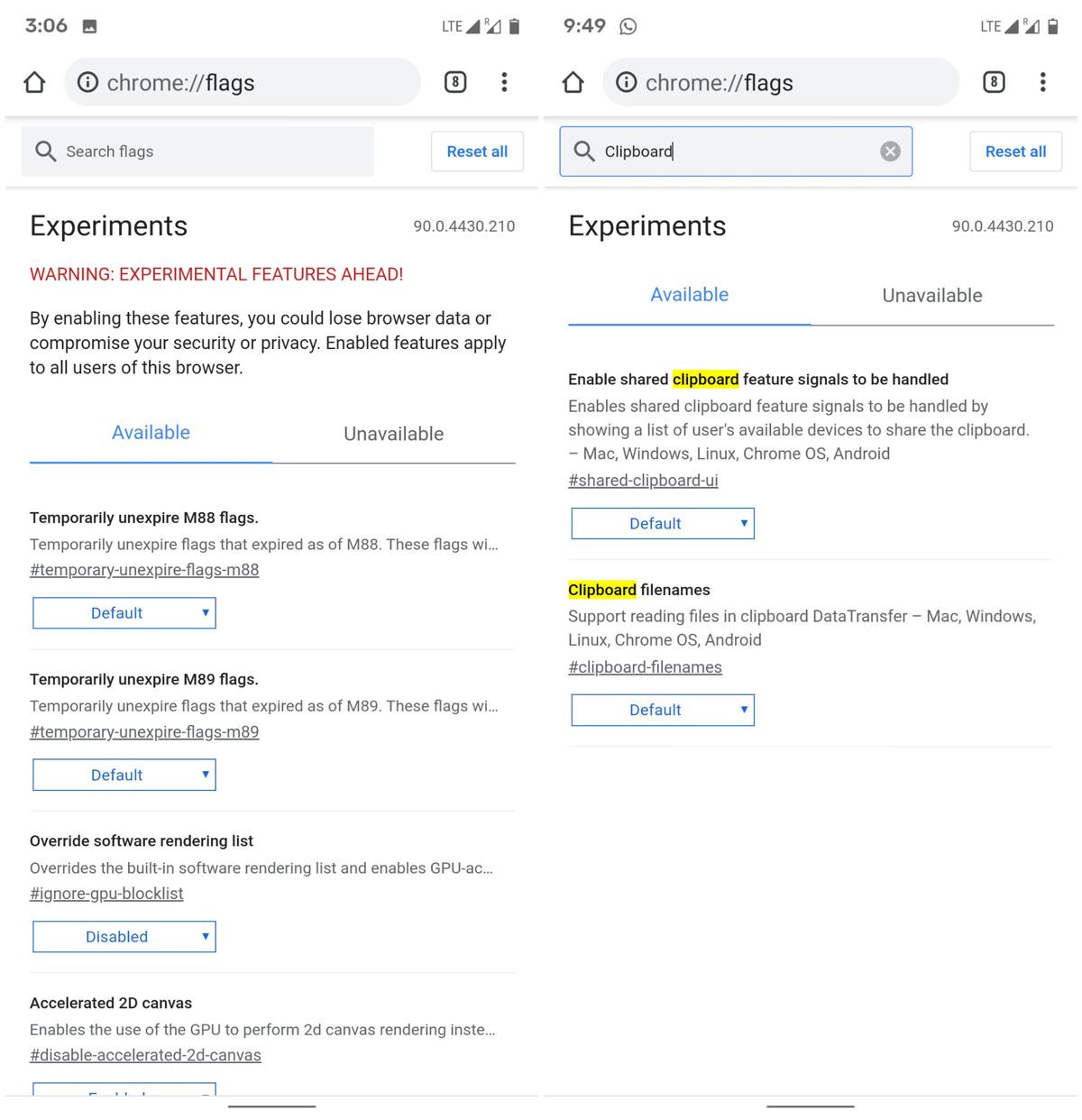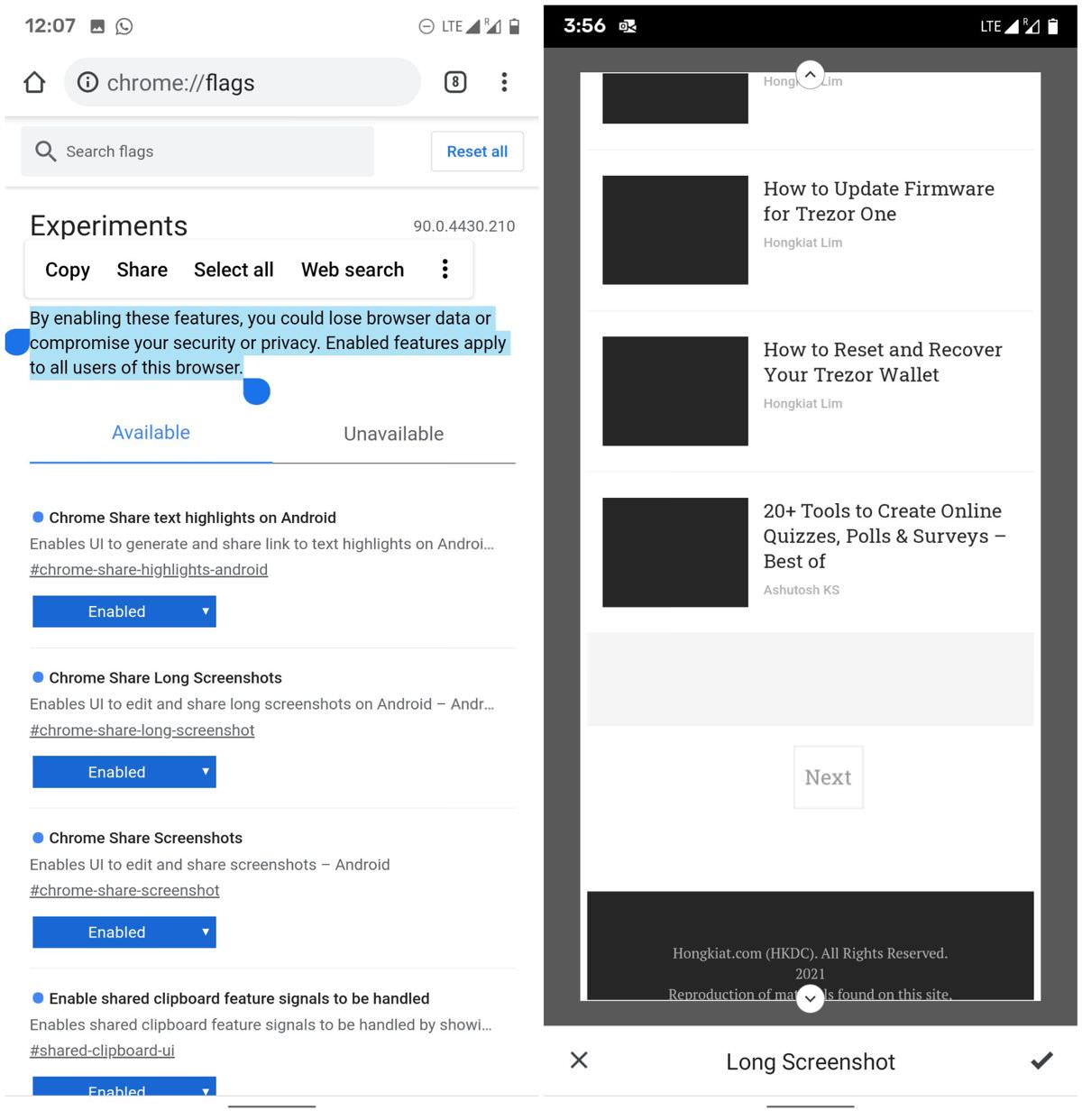5 Cool Ways to Share Pages With Chrome on Android
If you are a fan of Google Chrome on Android, this post is for you! Google Chrome has always attracted the top-notch resources of the search giant. That means Google heavily invests in it to bring new features and improve older ones to keep the competition at bay.
In the last few years, Google has been secretly improving the overall sharing experience of Chrome on Android. You might already know one or two of its sharing features, but there are more cool ways to share pages via Chrome. Since sharing pages on mobile devices is one of the common activities, if you become good at sharing pages, you can be more productive than ever at using Chrome.
Before I continue further, you must know that these tips and tricks are part of the flags system of Google Chrome. If you change the wrong settings there, you may damage the browser or your device. That said, let’s check out the various cool and productive options to share pages using Google Chrome on Android.
5 Quick and Handy Google Chrome Tips You Should Know
Aren't you satisfied with Google Chrome? It is no doubt the best browser when it comes to simplicity... Read more
1. Share Clipboard Across Devices
I believe this is one of the coolest features introduced in Google Chrome that allows you to copy and paste text across devices. Though you can get similar features by apps like PushBullet, however, a native feature in Chrome sounds amazing!
Through this cross-device sharing feature, you can share links or any text from your mobile device to another device. Before we continue further, you must make sure that Chrome Sync is enabled, and you are logged in with the same Google account on all the devices you want to share the clipboard with.
You have to follow these steps on Android to activate the shared clipboard:
- Type
chrome:flagsin the address bar of Chrome on Android. - In the search box shown at the top of the screen, type
clipboard. - Under the Enable shared clipboard feature signals to be handled option, select Enabled, and then click on the Relaunch button at the bottom.

You also need to change one flag option on your computer to make it work:
- Open
chrome:flagsin Google Chrome and search for clipboard. - Under the options labeled as Enables the remote copy feature to receive messages and Enable shared clipboard feature signals to be handled, click the dropdown showing Default and select Enabled from options.
- Click the Relaunch button shown along with the message at the bottom.

Now, it’s all enabled. When you need to copy any text between devices, highlight some text in Chrome on Android and select Send text to Your Devices from the sharing menu. A notification saying Text shared from your device will pop up on your computer screen. You simply have to choose Paste, and the copied text will get pasted on the target computer. That’s how the shared clipboard works!
2. Share Links to Text Fragments
Google introduced a superb feature to its search engine as well as its web browser, which is known as “text fragment links”. So far one could link to web pages, but this new feature allows linking to specific text fragments on a web page. Google uses it to show answers to your questions on search engine result pages by linking to the exact paragraph or sentence.
With this feature enabled, the target audience does not need to find or scroll down the shared web page to read the relevant section. Instead, they directly see the specific text being highlighted in yellow color to draw their attention. For example, here is a text fragment link that highlights my author bio.
Follow the below-given steps to enable this feature in Chrome on Android:
- Type
chrome:flagsin the address bar of Chrome on Android. - In the search box on the top of the given page, type
highlights. - Under Chrome Share text highlights on Android select Enabled.
- Finally, click on Relaunch to save your settings and restart Chrome.

Now, you are all set. You can open a web page, highlight some text, and click Share to open the sharing menu at the bottom of the screen. In there, select the Link to highlight option to create a hyperlink to the selected text. Finally, you will see another panel that will let you share the created text fragment link.

3. Use the Novel Screenshot Tool
Google Chrome has introduced a new screenshot tool, which gives you the ability to capture and edit your screenshots right in the browser. After its flag setting is enabled, you will find Screenshot under Google Chrome’s sharing menu. It allows you to crop, edit text, and annotate the screenshot too.
That said, follow these simple steps to enable the screenshot sharing tool:
- In Google Chrome’s address bar, type
chrome:flags. - In the search bar at the top of the flags page, type
screenshots. - Under Chrome Share Screenshots, click the dropdown select Enabled.
- Now, click on the Relaunch button shown at the bottom of the screen.
- Next, you can capture a screenshot by clicking on the options button in the top right corner and press on the Share option shown in the menu.
- Finally, select the Screenshot option from the sharing menu, and then, you can work with the screenshot editing tools shown in this new tool.


Use the Long Screenshot Tool
Moreover, there is a similar flag option named Chrome Share Long Screenshots, which lets you take screenshots of scrolled-down pages. For example, you can take a screenshot of the second page of Google or Hongkiat with this tool. It is a simple tool that lets you scroll down or up a page, then take its screenshot.

4. Disable Chrome Sharing Hub
Chrome on Android allows sharing the web pages with a few taps, making sharing faster than ever before. The reason being it is not limited by the Android’s Share menu, which only shows apps and contacts decided by Android. Instead, Chrome Sharing Hub shows extra sharing options like QR Code.
Fortunately, if you do not need the enhanced sharing menu, you can disable the Chrome Sharing Hub. Follow these steps to disable Chrome Sharing Hub:
- Go to
chrome:flagsand typesharing hubin the search box. - Under Chrome Sharing Hub and select Disabled in the dropdown.
- Click the Relaunch button at the bottom-right corner of the screen.
That’s all. When you press the Share button in Chrome on Android, you will see the Android’s de facto Share menu without the extra sharing options like QR Code and Print added by Google Chrome. You can undo it if you don’t like it.

5. Add Share Icon in Top Bar
With all these cool sharing options in Chrome on Android, you will get tempted to share more and more. However, the first slowdown you will face is that the Share option is buried under the options menu.
Fortunately, you can fix this by enabling a flag option that shows the Share icon directly in the top bar.
Here’s how you can enable the Share button in the top bar of Chrome:
- Open
chrome:flagsand typeshare buttonin the search box. - Under the Share button in top toolbar option > select Enabled.
- Click on the Relaunch button to restart your browser.
After the browser reopens, you can see the Share button next to the address bar of Chrome on Android. If you click on the icon, you will see the usual sharing menu at the bottom of the screen showing you different apps to share data with.